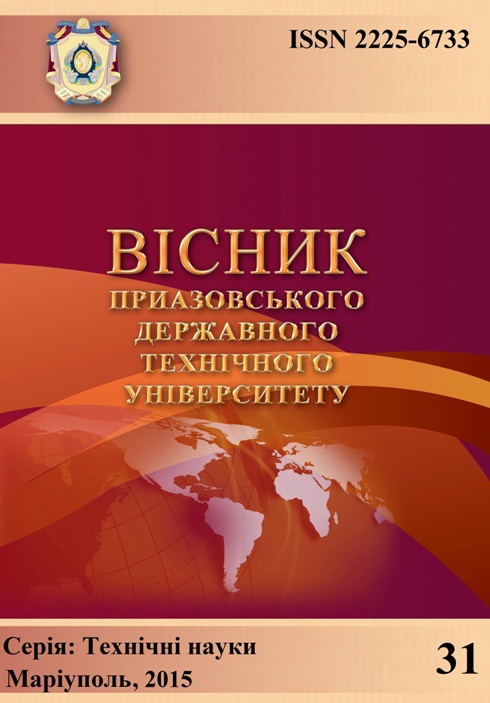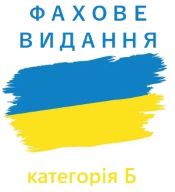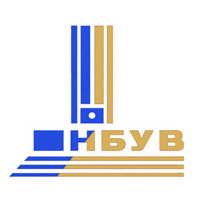Про формування поперечних тріщин на поверхні безперервнолитих заготовок, що відливаються з перитектичних марок сталей
DOI:
https://doi.org/10.31498/2225-6733.31.2015.70045Ключові слова:
безперервнолитий злиток, перитектичне перетворення, поверхнева тріщина, кордон зерна, відносне подовження, неметалеві включенняАнотація
Розглянуто механізми утворення поперечних тріщин на поверхні безперервнолитих заготовок в інтервалі температур розливання. Проведено аналіз факторів, що роблять істотний вплив на тріщиночутливість сталей перитектичного класу. Запропоновано ряд загальних рекомендацій щодо зменшення ймовірності утворення поверхневих тріщинПосилання
Вдовин К.Н. Тепловая работа узких медных стенок кристаллизатора МНЛЗ со вставка-ми / К.Н. Вдовин // Труды XIII конгресса сталеплавильщиков. – Москва-Полевской, 2014. – C. 321-325.
Белый В.А. Перспективы совершенствования формы сечения непрерывнолитой заго-товки / А.В. Белый // Сталь. – 2008. – № 9. – C. 24-27.
Цупрун А.Ю. Уменьшение пораженности поверхности слябов ребровыми трещинами за счет разработки рациональных режимов вторичного охлаждения / А.Ю. Цупрун // Металлург. – 2013. – № 9. – C. 65-70.
Носоченко О.В. Качество непрерывнолитых слябов перитектического состава / О.В. Носоченко // Сталь. – 2012. – № 3. – C. 12-15.
Василевский П.Ф. Технология стального литья / П.Ф. Василевский. – Москва : Машиностроение, 1974. – 406 c.
Brimacombe J.K. Crack formation in the continuous casting of steel / J.K. Brimacombe, K. Sorimachi // MTB. – 1977. – Vol. 8, № 2. – Р.p. 489-505.
Исаев О.Б. Разработка комплекса технологических мероприятий для улучшения ка-чества поверхности непрерывнолитых слябов высокопрочных перитектических марок стали / О.Б. Исаев // 50 лет непрерывной разливке стали в Украине. – Донецк : Ноулидж, 2010. – C. 147-164.
Xia G. Why are some peritectic steels susceptible to surface cracking formation for the continuously cast slab / G. Xia // 6th European Continuous Casting Conference. – Riccione, Italy, 2008. – P. Paper-22.
Presoly P. Identification of Defect Prone Peritectic Steel Grades by Analyzing High-Temperature Phase Transformations / P. Presoly, R. Pierer, C. Bernhard // Metallurgical and Materials Transactions. – 2013. – № 44(12). – Р.p. 5377-5388.
Флендер Р. Образование внутренних трещин в непрерывнолитых заготовках / Р. Флендер, К. Вюнненберг // Черные металлы. – 1983. – № 23. – C. 24-32.
Стивен Г.Д. Влияние характеристик выплавки и разливки на горячую пластичность балочной, сортовой и слябовой заготовки из ниобийсодержащих сталей / Г.Д. Стивен // Известия ВУЗов. Черная металлургия. – 2011. – № 9. – C. 13-20.
Чичкарев Е.А. Повышение качества непрерывнолитых заготовок из перетектических марок стали за счет совершенствования технологии разливки / Е.А. Чичкарев // Инновационные технологии внепечной металлургии чугуна и стали. – Донецк : Дон-НТУ, – 2011. – C. 241-248.
Лапотышкин Н.М. Трещины в стальных слитках / Н.М. Лапотышкин, А.В. Лейтес. – Москва : Металлургия, 1969. – 112 c.
Crowther D.N. The Effects of Microalloying Elements on Cracking During Continuous Casting / D.N. Crowther // Proceedings of the international symposium 2001 on Vanadium application technology. – Beijing, China, 2001. – Р.p. 99-131.
Influence of Strain Rate on Hot Ductility of a V-Microalloyed Steel Slab / S. Großeiber et al. // Steel research international. – 2012. – Vol. 83. – Issue 5. – Р.p. 445-455.
Огородникова О.М. Прогнозирование кристаллизационных трещин в стальных отливках / О.М. Огородникова, С.В. Мартыненко, В.М. Грузман // Литейное производство. – 2008. – № 10. – C. 29-34.
Chen L. Effects of Second Phase Particle Dispersion on Kinetics of Isothermal Peritectic Transformation in Fe-C Alloy / L. Chen // ISIJ International. – 2012. – Vol. 52. – № 3. – Р.p. 434-440.
Kato T. Improvement of hot shortness and prevention of transverse improvement of hot shortness and prevention of transverse cracking by slab surface microstructure control / T. Kato // 4th European Continuous Casting Conference. – Birmingham, United Kingdom, – 2002. – Р.p. 849-857.
Бердников С.Н. Совершенствование конструкции узких стенок кристаллизаторов слябовых МНЛЗ / С.Н. Бердников // Сталь. – 2012. – № 2. – C. 92-95.
Экхардт Д. Выбор шлакообразующих смесей для непрерывной разливки углеродистой стали / Д. Экхардт, Д. Бехманн // Сталь. – 2008. – № 11. – С. 19-22.
Sengupta J. A new mechanism of hook formation during continuous casting of ultra-low-carbon steel slabs / J. Sengupta // Metall and Mat Trans A. – 2006. – Vol. 37. – № 5. – Р.p. 1597-1611.
##submission.downloads##
Як цитувати
Номер
Розділ
Ліцензія
Журнал "Вісник Приазовського державного технічного університету. Серія: Технічні науки" видається під ліцензією СС-BY (Ліцензія «Із зазначенням авторства»).
Дана ліцензія дозволяє поширювати, редагувати, поправляти і брати твір за основу для похідних навіть на комерційній основі із зазначенням авторства. Це найзручніша з усіх пропонованих ліцензій. Рекомендується для максимального поширення і використання неліцензійних матеріалів.
Автори, які публікуються в цьому журналі, погоджуються з наступними умовами:
1. Автори залишають за собою право на авторство своєї роботи та передають журналу право першої публікації цієї роботи на умовах ліцензії Creative Commons Attribution License, яка дозволяє іншим особам вільно розповсюджувати опубліковану роботу з обов'язковим посиланням на авторів оригінальної роботи та першу публікацію роботи в цьому журналі.
2. Автори мають право укладати самостійні додаткові угоди, які стосуються неексклюзивного поширення роботи в тому вигляді, в якому вона була опублікована цим журналом (наприклад, розміщувати роботу в електронному сховищі установи або публікувати у складі монографії), за умови збереження посилання на першу публікацію роботи в цьому журналі.









